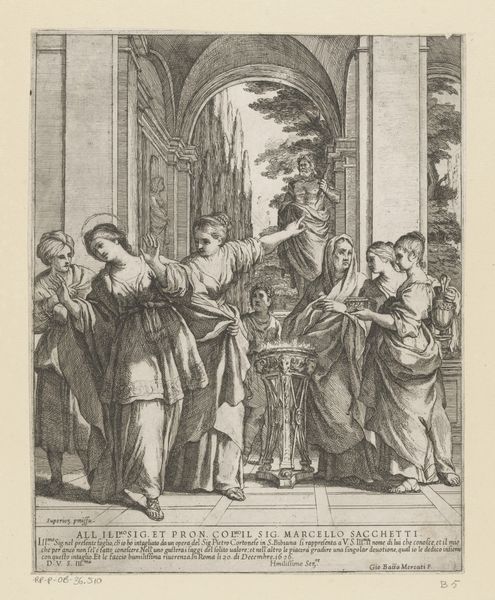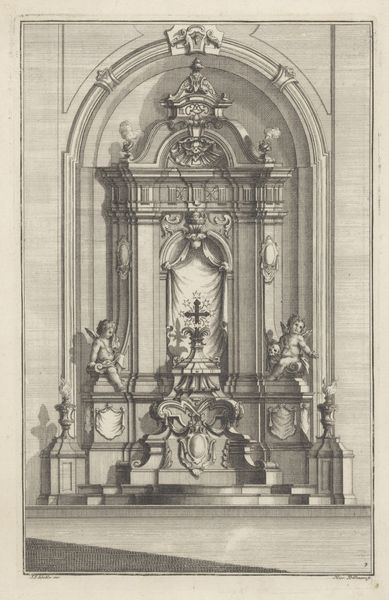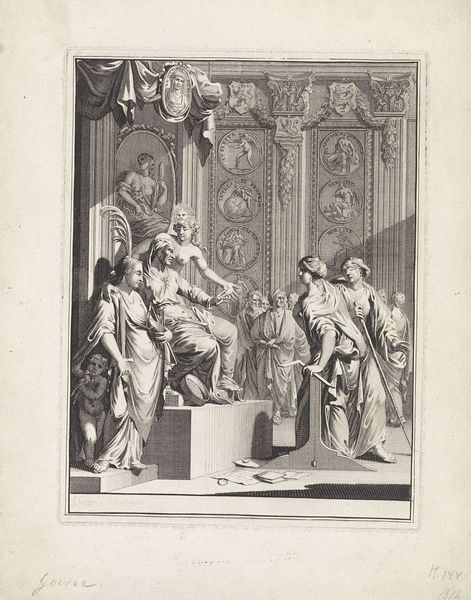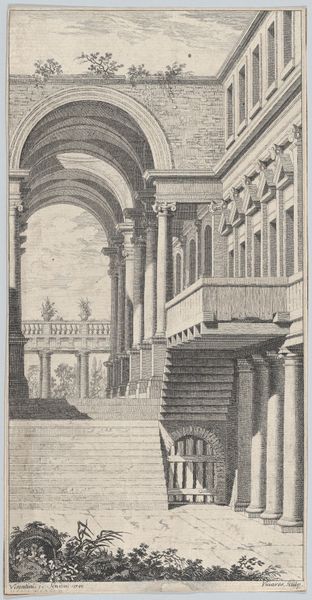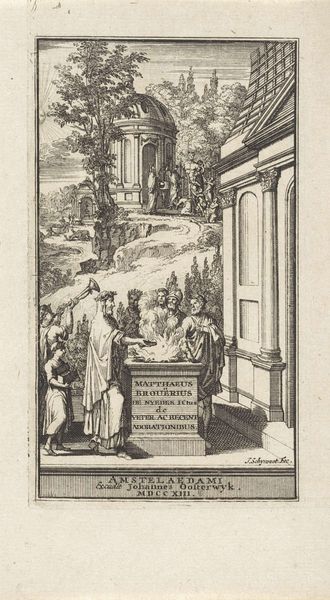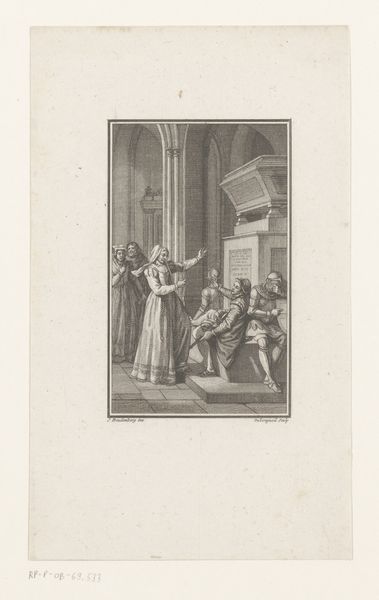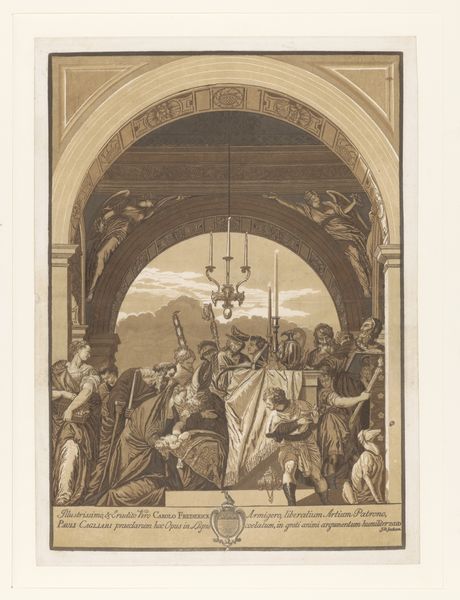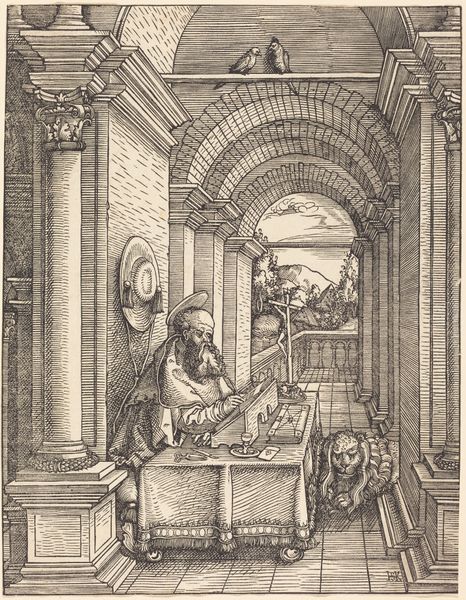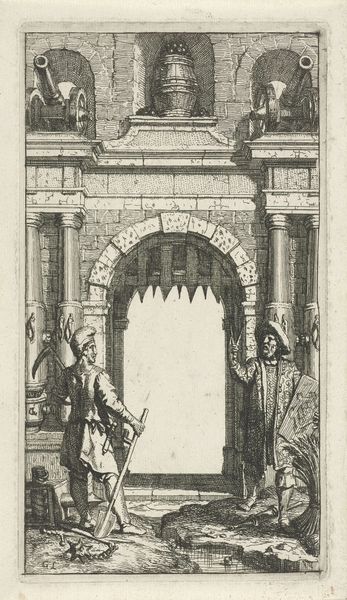
print, metal, engraving
#
portrait
# print
#
metal
#
old engraving style
#
traditional media
#
caricature
#
11_renaissance
#
engraving
Dimensions: height 428 mm, width 266 mm
Copyright: Rijks Museum: Open Domain
Editor: This print, titled "Dubbelportret van Albrecht Dürer in een eregalerij", dates from between 1589 and 1637 and is attributed to Lucas Kilian. It’s currently held at the Rijksmuseum. The level of detail in this metal engraving is striking. What can you tell me about it? Curator: Look closely at the tools depicted. Consider the materiality of metal as a reproductive technology, how it allows for the wide dissemination of Dürer's image and ideas. Note the precise, laborious process required to create this image. The work becomes an act of memorializing and mythologizing Dürer. We see his presence multiplied across geographical boundaries via the circulation of prints like this. Editor: So, the print medium itself is crucial to understanding the artwork’s message and context? It’s not just about *what* is depicted, but *how* it’s depicted and distributed? Curator: Exactly. The very act of creating this print involves a complex interaction of labor, skill, and materials. Engraving is itself a demanding and meticulous craft. By choosing this medium, Kilian aligns himself with the legacy of Dürer while participating in a burgeoning market for printed images. Ask yourself what type of work and resources Kilian relied upon to make these art pieces possible. How was his final product sold and consumed? Editor: That really shifts my perspective. I hadn't thought about the engraver's role in shaping Dürer’s legacy through a commercial process. I’m starting to think more about the material and labor behind the art, not just the image itself. Curator: Consider this—was the art more for art’s sake or a valuable commercial asset? In any case, the creation and circulation of printed portraits such as this shaped cultural values in unexpected ways during the Renaissance and beyond. What questions does this raise about Dürer’s artistic choices? Editor: Thanks, I now realize that analysing art involves considering how material choices, labor, and consumption interact with its cultural significance.
Comments
No comments
Be the first to comment and join the conversation on the ultimate creative platform.
